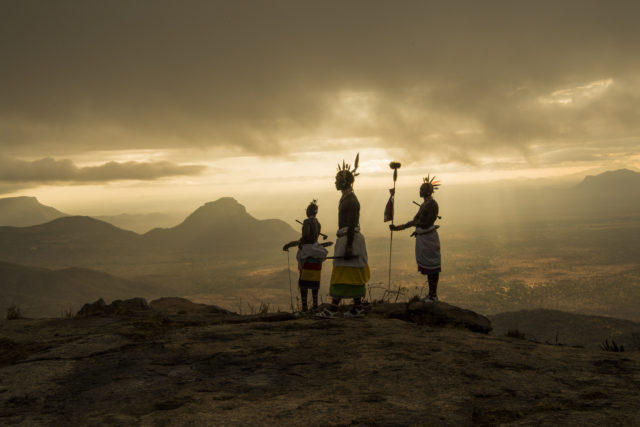Please see my new work in National Geographic Magazine which will be published in the August, 2017 issue of the magazine about an elephant sanctuary in Northern Kenya. What makes it so special is that it is owned and operated by the indigenous Samburu community. It was a privilege to be allowed into this sacred place. In a world where we often focus only on the things that divide us, it’s important also to talk about the solutions and a way forward. The indigenous people living side by side to the wildlife hold the keys to saving what is left. Please considering visiting Kenya or even contributing to the sanctuary. Link is at end of this story.
Tag: Women
Film for Ripple Effect Images
MediaStorm created a beautiful film about my work with Ripple Effect Images. Our aim is to tell the stories that empower women around the world. Watch it HERE.
For photographer Ami Vitale, the pivotal moment occurred in Guinea-Bissau.
It was the start of her career and she was visiting her sister in the Peace Corp. Vitale expected Africa to be filled with war, famine, plague or the other extreme, exotic safaris.
Living in West Africa for six months showed her not only “how the majority of people on the planet live their day-to-day life,” but that people were not as hopeless as the newspapers portrayed. There was “a great deal of joy there.”
It is a revelation that has guided Vitale through 80 countries and a 13-year career.
Her original desire to take “beautiful pictures” was transformed into a desire to do justice to people and their stories. As a photographer Vitale’s focus has centered on issues surrounding women, poverty and health. The common denominator to all of her stories, she realized, is nature, specifically climate change. And it’s women who bare the brunt of those changes.
But when a woman is offered the tools to improve her situation, she runs with the opportunity. She transforms communities. “It’s a ripple effect,” says Vitale.
It’s the desire to see change that led Ami Vitale to join Ripple Effect Images, a photography organization started by Annie Griffiths that shares imagery with other changemakers.
“We are telling the stories that are so important and get lost in the headlines,” says Vitale. “They are the key to connecting things and allowing people to get engaged and make a difference.”]
Covering Conflicts
With the events unfolding across the Middle East, the Dart Center for Journalism and Trauma contacted myself and several other journalists who have worked in conflict zones to better understand what you can do to cover volatile street protests without getting injured. Here are my comments and please look at this link to see some intelligent advice from a few well-known, seasoned journalists who have collectively covered many of the most dangerous hot spots on the globe.
1) First find a safe place that gives a clear view of what is happening without putting you in the middle of the fighting. For example, go on top of a building above to analyze what is happening below. Take time to watch how the police/military and crowds are reacting. Do they have live ammunition? Are events escalating quickly? Its important to understand what might happen and how to find a safe place to cover unfolding events.
2) Go with someone who knows the city well if you do not. Know where there are some exit points. For example, don’t get caught in between a crowd and the police on a bridge. There is nowhere to escape if it turns violent. If it’s in a city, look for doorways and alleys to slip into if you need a quick escape.
3) Understand there is no reasoning with mobs. My own personal experience was in Palestine when a mob of angry young men thought I might be an agent of a foreign government. The only thing that saved me was because I had spent the day with a group of women in their home and they saw the angry mob and came to rescue me. Because they felt they knew me and trusted me, they got involved. If I had only showed up to cover this event and had known anyone, there is a good chance I would not have made it out alive. Mobs are angry, there is no reasoning with them and they often want to see blood in order to avenge someone.
4) Understand visual cliches and try to get past stereotypes in a fast-breaking story. For example, I will often try to find quieter ways of telling a violent, sensational story. The violence often overshadows the deeper message.



